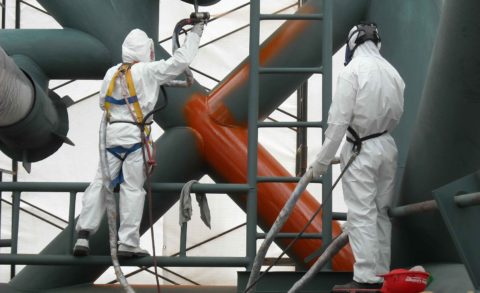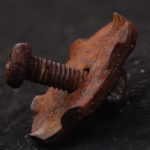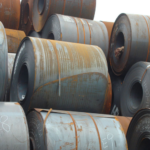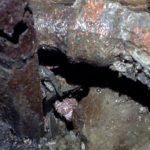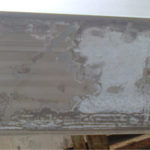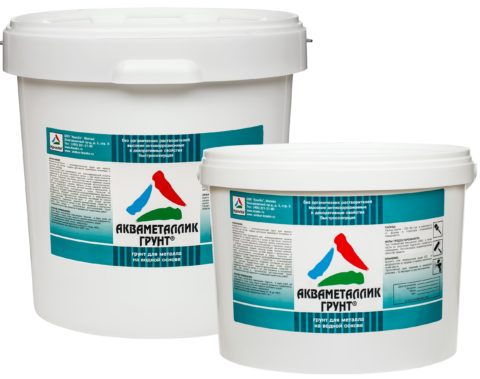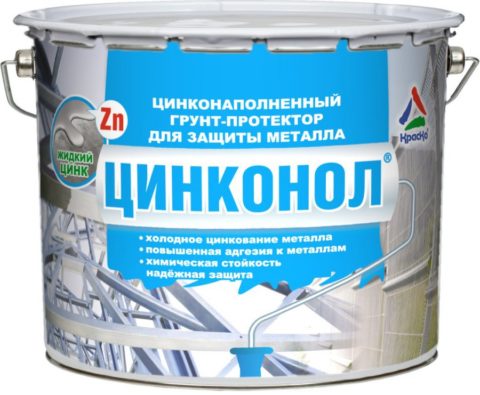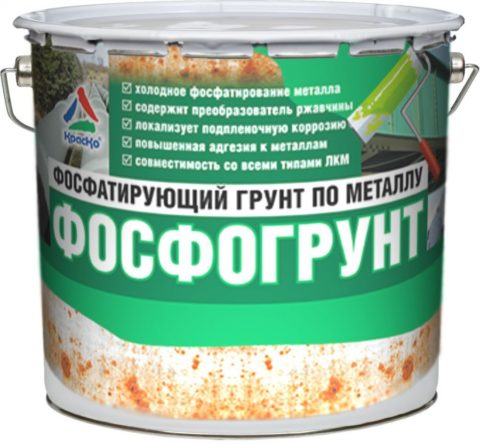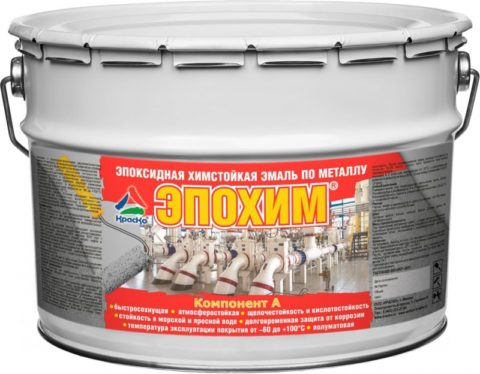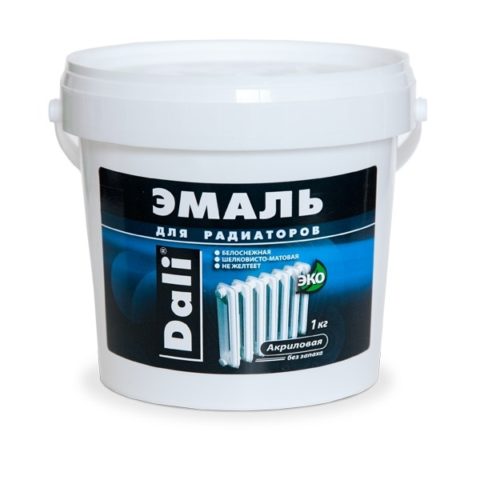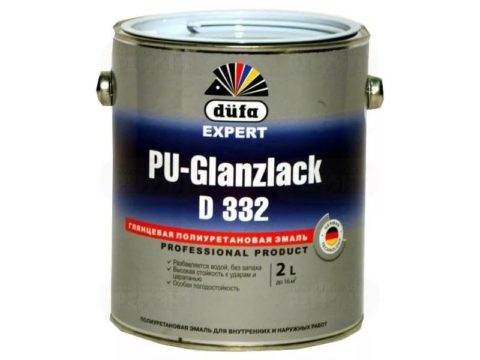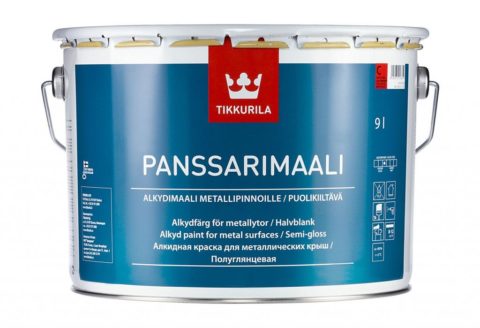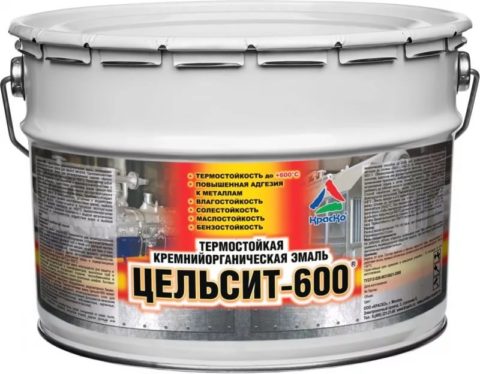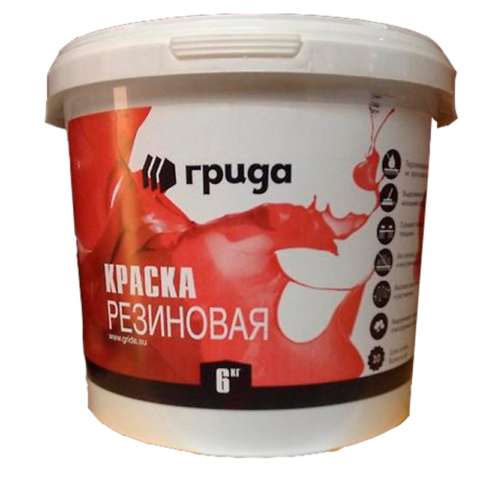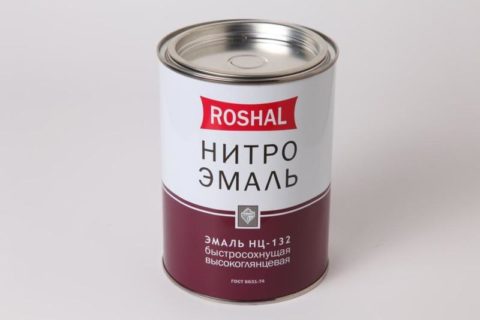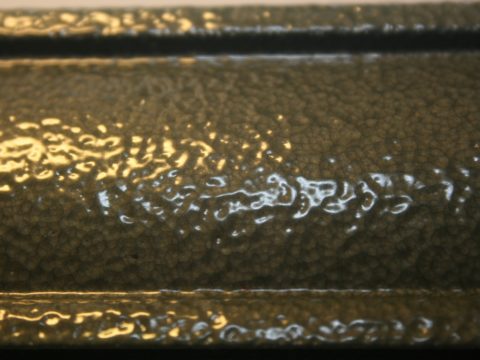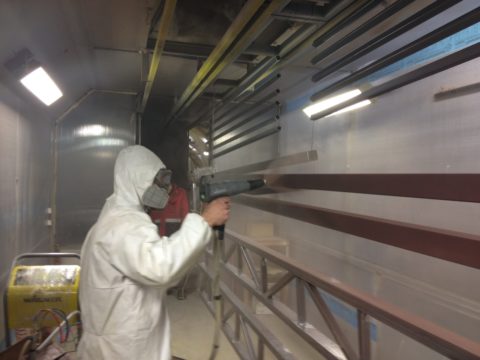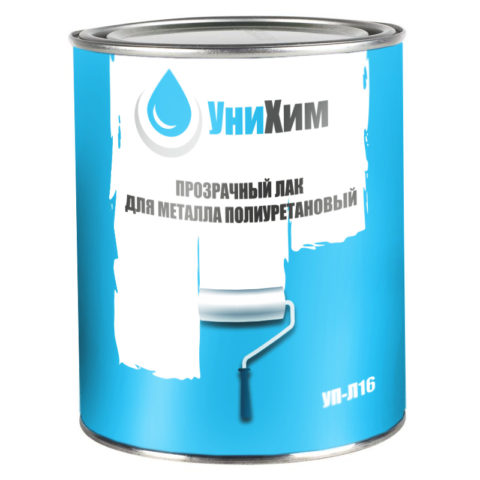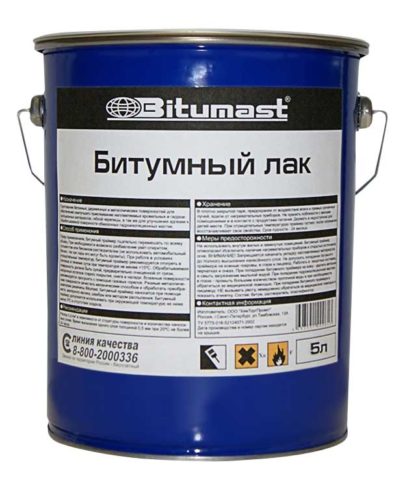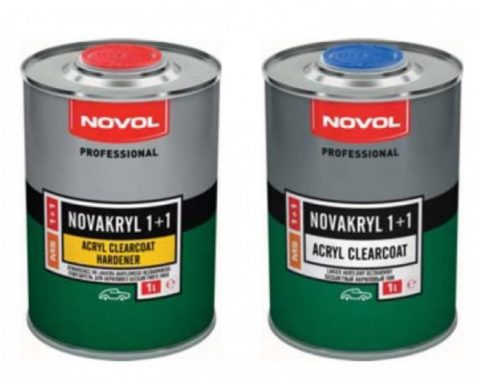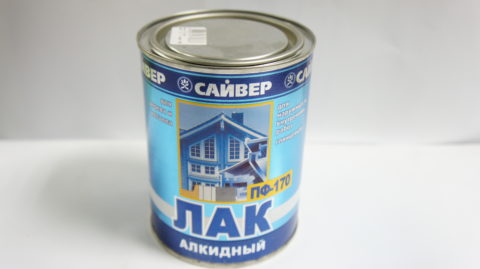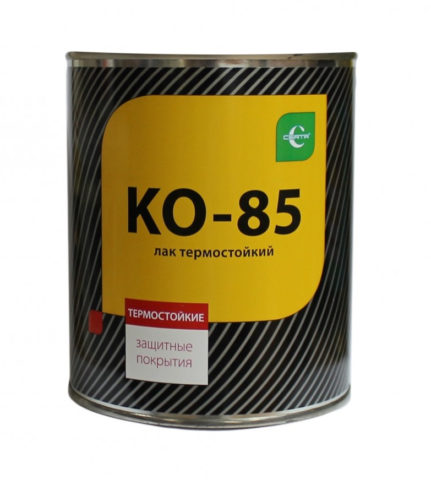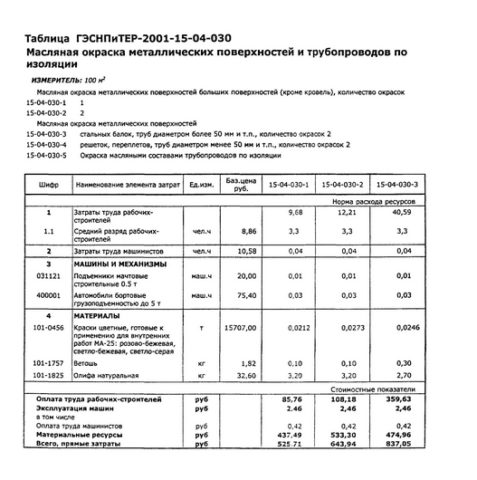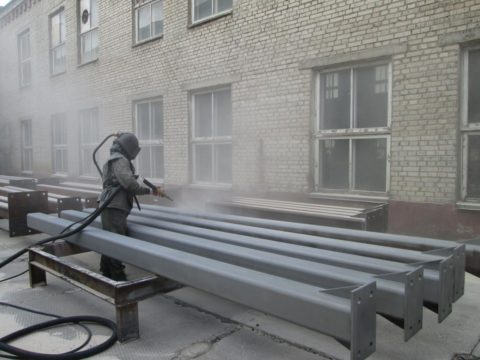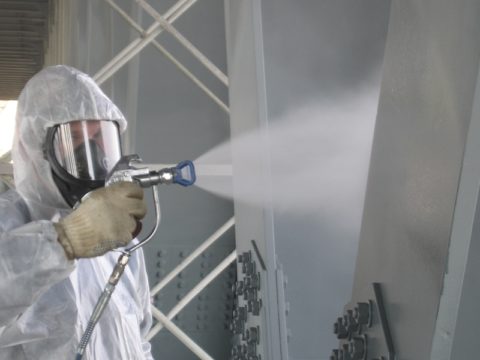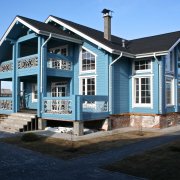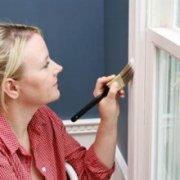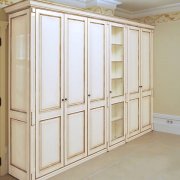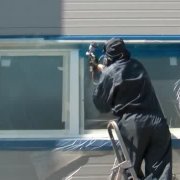Painting of metal structures: materials used, stages of work
Metal constructions are ubiquitous in our lives. In order to give them an attractive appearance, and, most importantly, to protect them from corrosion, which over time will lead to the destruction of the structure, metal structures are painted.
Our article will help you understand what types of coatings are used, and how to properly organize the work process.
The content of the article
Why it is necessary to process a metal surface
The main problem that can be encountered during the operation of metal structures is corrosion.
It can develop over the entire surface of the material or in certain areas of it:
- There are many types of corrosion. The main ones are chemical, electrochemical and gas.
- As aggressive environments act: atmospheric air, water, gases, chemicals.
- All metals and alloys are more or less susceptible to corrosion. (for example, its speed in low-carbon steel is 0.05 ... 0.1 mm / year, whereas in galvanized steel this figure is 10 times lower).
- Iron corrosion
- Galvanized Steel Corrosion
- Cast Iron Corrosion
- Chromium corrosion
- Copper corrosion
- Aluminum corrosion
It is possible to protect metal from corrosion using electrochemical methods, by changing the properties of a corrosive medium, alloying metals. You can also isolate metal from contact with the external environment by applying paint, metal, polymer and other types of coatings on its surface.
Description of paints and varnishes for metal processing
According to their purpose, coatings are divided into paints (enamels), varnishes and primers.
The use of these tools is convenient in that, in most cases, they can be applied to a metal structure at its location. After processing, a film forms on the surface, which protects the material from harmful effects.
Note! In the joint venture 28.13330.2012 “Protection of building structures from corrosion”, GOST 9.402-2004 “Unified system of protection against corrosion and aging (ESZKS). Varnish-and-paint coatings. Preparation of metal surfaces for painting ”, the types and conditions of application of various coatings are established, as well as the requirements for preparing the surface for painting.
Consider the most commonly used tools for painting and protecting metal surfaces with your own hands.
Primers
The application of the primer allows you to create a thin film on the metal surface that protects the material from external influences, improve the adhesion of the surface and the subsequently applied base coat, ensure good coating quality, as well as its economy.
The soil should be selected depending on the type of metal, the conditions of its operation, as well as the type of coating applied afterwards (seePrimer for steel pipes: how to apply).
Types of primers for metal, depending on the type of film former:
- Alkyd. Popular coverage. It is made on the basis of alkyd film formers. This primer increases the corrosion resistance of the metal, provides good adhesion to the paint. The primer is heat resistant and protects against aggressive substances. It is applied to external and internal works. The composition is compatible with many types of coatings. Average consumption ̶ about 0.1 kg / sq.m (per 1 layer).
- Acrylic. This primer is suitable for use at home, as it dries quickly and does not have an unpleasant odor. Creates a strong protective layer, smoothes the surface, provides good adhesion. Consumption rate ̶ 0.2 kg / sq.m.
Important! Acrylic acid primer is not intended for application to paint.
- Epoxy. It protects the metal from the effects of the atmosphere, oil products. Recommended for use on structures operating in high humidity. For 1 m2, 0.15 kg of soil is required.
- Polyurethane. It has good indicators of wear resistance, resistance to weathering and chemical reagents. Suitable for application on steel, cast iron, aluminum, copper. Compatible with polyurethane enamels. Soil consumption is about 0.1 kg / sq.m.
- Phosphating. It contains phosphoric acid and a diluent. Such a primer is used for steel surfaces, sometimes for aluminum. Universal primer compatible with all types of paints. Contains rust converter, has good adhesion. This coating has a fairly good resistance to high temperatures: up to 200 degrees. Up to 0.15 kg of primer is consumed per 1 m2.
The best moisture resistance are epoxy primer and fluorine-based primer.
Depending on the type of exposure, the following types of primers are distinguished:
- Tread. The primers contain aluminum and zinc powders, providing reliable protection against corrosion. As the film former can be used polyurethane, polystyrene, epoxy compounds.
- Insulating. The primer forms a protective film. Such types of soils include some types of alkyd and epoxy materials. The primer does not have a very short action.
- Passivating. It prevents corrosion from spreading and spreading. Protective properties directly depend on the concentration of chromic acid salts.
- Inhibitory. Corrosion inhibitors significantly enhance the protective properties of the soil. Thanks to them, a “primer-enamel” coating is formed on the metal surface.
- Rust converter. These formulations allow for the presence of rust when applied, which they themselves can destroy. However, such a soil does not serve to protect the structure. It should be used together with other primers, best of all, with passivating ones.
Note! If we consider the same structure, painted with the same paint, but primed with different compositions, then the best indicators of weather resistance are obtained using a tread primer, the data for passivating soil are slightly worse, and the insulating composition turned out to be the weakest in this indicator.
The primer is usually applied in 2-3 layers. In order to correctly determine the choice of material, we recommend that you familiarize yourself with the information contained in the instructions on the package before purchasing.
Paints
Types of paints for application to metal surfaces produced a couple of dozen. Consider the most popular.
The composition distinguishes the following coatings:
- Epoxy The compounds reliably protect most types of metals, are resistant to mechanical damage, the effects of water, fuels and lubricants, alkalis, acids, solvents. Paints are not recommended for use at home due to toxicity. To paint 1 m2 of a metal surface in one layer, 0.15-0.2 kg is required.
- Acrylic Used for exterior and interior use (see Acrylic paints and how to use them: tips, specifications and recommendations) They protect the metal well from corrosion, are flexible and have a long service life. They can be used for painting heating radiators.
- Polyurethane paints. They are used outdoors and indoors.They can be one- and two-component. Protect from corrosion steel, cast iron, aluminum, copper. Do not form streaks when painting vertical surfaces. The compositions can be applied at low temperatures. They withstand the temperature range of -60 .. + 80 degrees. They have good tensile strength, resistance to chemistry. The consumption of such a coating per 1 m2 is only 0.1-0.15 kg.
- Alkyd paints. Long-lasting coating with a wide variety of shades. Cons are considered a long drying time, poor resistance to ultraviolet radiation. Paint consumption: 0.15-0.2 kg / m2.
- Organosilicon. Paints are durable, have a large selection of colors. They well protect the metal from corrosion, resistant to frost, temperature extremes, precipitation, ultraviolet. For use when painting indoors, the barrier is a pungent odor. Heat-resistant varieties can withstand constant exposure to high temperatures (up to 350 degrees). Up to 0.15 kg is consumed per 1 sq. M.
- Rubber. These coatings can be applied on any surface, on all types of soils. They tolerate mechanical influences well, provide excellent protection to the metal, but the price of paints is quite high. Composition consumption: 0.25 kg / 1 sq.m.
- Nitro-paint. This coating is rarely used due to a large number of disadvantages: the paint has a short service life, poor adhesion, unpleasant odor, and poor resistance to sunlight. However, it dries quickly and can be applied even at sub-zero temperatures.
- Hammer paint. This coating is based on alkyd, acrylic or epoxy resins. Shine and roughness are provided by the addition of glass and aluminum powder. The paint creates a stable anti-corrosion coating of ferrous and non-ferrous metals, very attractive in appearance. Such a quick-drying composition can be applied directly to a surface susceptible to corrosion. The paint is durable, resistant to all types of weathering.
The coating structure perfectly conceals surface defects.
However, such seemingly ideal coverage also has drawbacks. These are: price and decent expense.
- Powder paint. The basis of this paint is polymer resins, it is a fine powder. The use of the composition and the staining technology allows you to get a strong, durable coating.
The composition is applied in one thin layer to the treated surface. The most commonly used electrostatic method is spraying a grounded metal structure.
Then, in the polymerization chamber, melting occurs at temperatures of 160-200 degrees. The result is a uniform, monolithic, hermetic coating, the quality of which is significantly higher than that obtained during the staining process.
Important! Before painting, the product should be cleaned of rust and dirt, primed (phosphate coating is recommended) and dried.
Staining by this technology requires special equipment: a pneumatic spray gun, a spray chamber, and a furnace chamber. Powder paint has a large palette of colors and textures (imitation stone, various types of metal, mother of pearl, chameleon, etc.)
The base cost of powder painting of metal structures, for companies specializing in this service, is in the range of 170-180 rubles / sq.m. The cost of processing is not the lowest, but the durability of the coating compensates for the costs.
Lucky
It:
- Polyurethane The varnish has a long service life, is resistant to wear and temperature (up to 70-80 degrees), durable. Pigments are allowed in a transparent composition.
- Bituminous. This coating has good strength, resistance to temperature changes, the effects of chemistry. It has good performance. It forms a black protective film.
- Acrylic. Quick-drying, moisture-resistant varnish. It protects against corrosion.
- Alkyd. The coating is resistant to chemistry, moisture, temperature, mechanical damage.
- Heat-resistant varnish “oven”. The varnish is black. It is resistant to temperatures up to +250 degrees. The varnish has good weather resistance.
The order of work
When choosing the technological process of surface preparation and direct painting, the type of metal and the conditions in which the structure is operated are taken into account.
Painting metal surfaces demonstrates the video:
Stages of painting:
- Preliminary. An inspection of the object is carried out, the area of painting of metal structures is determined, the coating option is selected, depending on the selected technological scheme, an estimate is made for painting of metal structures.
Determining the area to be painted is not always easy. In everyday situations, you can use online calculators.
GESN 81-02-13-2017 “Protection of building structures and equipment from corrosion” will help to solve the problem of how to calculate the area of painting of metal structures and correctly draw up estimates.
An example of calculating the cost of painting (see photo):
- Surface preparation. The durability and characteristics of the applied coating largely depend on the quality of this stage. The aim of the work is to remove elements that may impede staining and accelerate corrosion processes.
- The structure is being cleaned of dirt. The production of this operation is carried out using mechanical, chemical or thermal (less commonly) methods.
It is more convenient to perform surface machining using sandblasting equipment. Such pressure treatment with sifted sand allows you to clean large areas in a short period of time.
- Primer surface. If necessary, the surface should be pre-degreased. After processing, the coating should dry.
- Painting the structure. Depending on the shape and area of the product and the composition used, application by brush, roller, spraying or dipping (for small parts). If necessary, after the paint dries, a varnish coating is applied.
Painting of metal products and structures is a key means to ensure the durability of structures. When choosing a process technology, it is necessary to analyze operating conditions, calculate how much it costs to paint metal structures using various compositional options, and select materials suitable in a particular case.
Subject to the use of correctly selected and high-quality coatings, the metal structure will delight for many years with a beautiful appearance.
